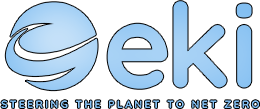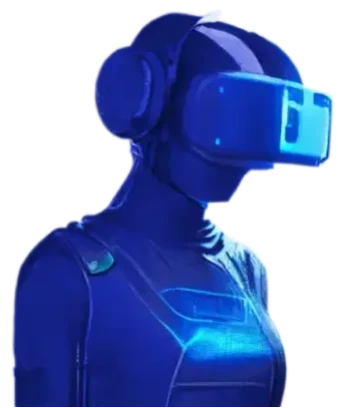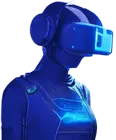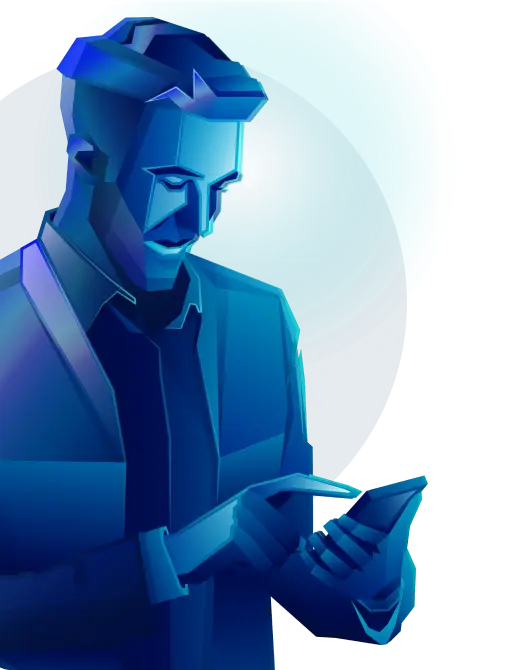
A Deep Dive into Remote Monitoring Parameters in IoT: What Can Be Monitored?
Welcome to the world of IoT, where our everyday objects are becoming smarter and more connected than ever before. From refrigerators that can order groceries to cars that can navigate themselves, the Internet of Things is revolutionizing how we live and interact with technology. But have you ever wondered what goes on behind the scenes? How do these devices communicate and gather data seamlessly? The answer lies in remote monitoring parameters, a crucial aspect of IoT that allows us to monitor and control various aspects of our connected devices from anywhere in the world. In this blog post, we will take a deep dive into remote monitoring parameters in IoT and explore what exactly can be monitored. Get ready for an enlightening journey as we uncover the incredible capabilities of this cutting-edge technology!
Introduction to Remote Monitoring in IoT
The Internet of Things (IoT) is rapidly becoming a mainstay in today’s society. With the ability to connect physical devices and objects to the internet, IoT has the potential to revolutionize the way we live and work. One of the key applications of IoT is remote monitoring.
Remote monitoring refers to the practice of monitoring a process, machine or system from a distance. This can be done using various sensors and data-gathering technologies, which transmit information about the monitored system back to a central location. By using remote monitoring, organizations can save time and money by reducing the need for on-site personnel. Additionally, remote monitoring can provide real-time insights into system performance, allowing for proactive maintenance and problem solving.
Read Also :- Salesforce Consultant Company in USA
There are many different parameters that can be monitored remotely in an IoT system. Some common examples include temperature, humidity, pressure, sound levels, vibration and position (such as GPS tracking). The specific parameters that are monitored will depend on the application and use case. For example, a manufacturing company may choose to monitor temperature and vibration levels in their machines in order to reduce downtime and improve quality control. Alternatively, a transportation company may track GPS data in order to better understand traffic patterns and optimize routes.
In order to implement remote monitoring in an IoT system, various sensors must be deployed throughout the environment. These sensors collect data about the desired parameters and transmit this information back to a central server or cloud platform. The data is then processed
What Parameters Can Be Monitored?
There are a variety of different parameters that can be monitored remotely using IoT technology. Some of the most common parameters that are monitored include:
- -Temperature
- -Humidity
- -Pressure
- -Wind speed
- -Rainfall
- -Soil moisture
These are just some of the most commonly monitored parameters, but there are many others that can also be monitored depending on the specific application. By monitoring these parameters remotely, it is possible to get real-time data that can be used to make decisions and take action accordingly.
Types of Sensors Used for Remote Monitoring
There are a wide variety of sensors that can be used for remote monitoring, and the specific sensor(s) used will depend on the specific parameters being monitored. Some common types of sensors used for remote monitoring include:
- -Temperature sensors: These sensors can be used to monitor ambient temperature, as well as temperature of specific objects or areas.
- -Humidity sensors: These sensors can be used to monitor relative humidity levels.
- -Pressure sensors: These sensors can be used to monitor atmospheric pressure, as well as the pressure of liquids and gases.
- -Flow sensors: These sensors can be used to monitor the flow rate of liquids and gases.
- -Position sensors: These sensors can be used to monitor the position or movement of objects.
Benefits of Remote Monitoring Through IoT
IoT devices are becoming more and more popular as they offer a wide range of benefits for both consumers and businesses. One of the main benefits of using IoT devices is that they allow for remote monitoring. This means that you can monitor your devices from anywhere in the world, as long as you have an internet connection.
There are many benefits to using IoT for remote monitoring. For businesses, it can help to improve efficiency and productivity as well as reducing costs. For consumers, it can provide peace of mind and convenience. Here are some of the key benefits of using IoT for remote monitoring:
1. Increased Efficiency: Remote monitoring through IoT can help businesses to become more efficient as they can track their devices and see how they are performing in real-time. This information can then be used to make changes or improvements to increase efficiency.
2. Improved Productivity: By being able to monitor their devices remotely, businesses can ensure that they are being used effectively and efficiently. This can lead to improved productivity as employees will be able to work more quickly and effectively.
3. Reduced Costs: Remote monitoring can also help businesses to reduce their costs as it eliminates the need for on-site staff to monitor devices. Additionally, it can also help businesses to save on energy costs by allowing them to remotely control their devices and turn them off when not in use.
4. Peace of Mind: For consumers, one of the main benefits of using IoT for remote monitoring is that it
Use Cases of Remote Monitoring Through IoT
There are many potential use cases for remote monitoring through IoT. Here are some examples:
- Monitoring the performance of industrial equipment in real-time to identify issues early and prevent downtime
- Tracking the location and status of high-value assets such as vehicles or machinery
- Managing inventory levels and supply chain logistics
- Monitoring environmental conditions in buildings or agricultural operations
- Collecting data from weather stations or other sensor networks
Challenges and Risks with Remote Monitoring
There are several challenges and risks associated with remote monitoring. One challenge is ensuring that data is accurate and timely. There can be delays in data transmission, or data may be lost altogether. Another challenge is dealing with the sheer volume of data that can be generated by IoT devices. This can overwhelm analysts and make it difficult to identify patterns or trends.
Risks include the potential for cyberattacks and security breaches. IoT devices often contain sensitive information, such as health data or financial information. If this information falls into the wrong hands, it could be used for identity theft or fraud. Another risk is privacy concerns. IoT devices can collect a lot of personal data, including location data, which could be used to track someone's movements or activities.
Graphic design is the process in which messages and images are used to deliver information like products, services of business to a targeted audience.
It is visual communication. Anything that needs to be communicated and is impossible verbally needs to be put into some form of graphics that conveys a message. Stop reading this blog post for a moment and just look around. The pack of gum around your work area, the magazine cover, the adorable saying on your espresso mug, and even the images in a TV advertisement are all examples of graphic design. Graphic design is a huge part of your regular life and you probably hardly notice it, but imagine life without designs it would be incomplete and strange.
Everything would be in a plain, simple just a white wrapper. No images, No text.
A simple trip to the supermarket would be a wheel game! You cannot distinguish between a box of Chocos and a box of Corn Flakes! How would you find your favorite resort? How would you know what services they are offering?
Thus, we need graphic design and is essential for us so that we can convey our messages clearly and effectively.
Always Remember: Your design should say “I am amazing”
This is because if we come across two similar products, we always decide to buy the one with nicest packaging. Often decisions are made by looks and people mostly judge the book by its cover.
Hire a graphic designer if you want your design to say “I am amazing”!













